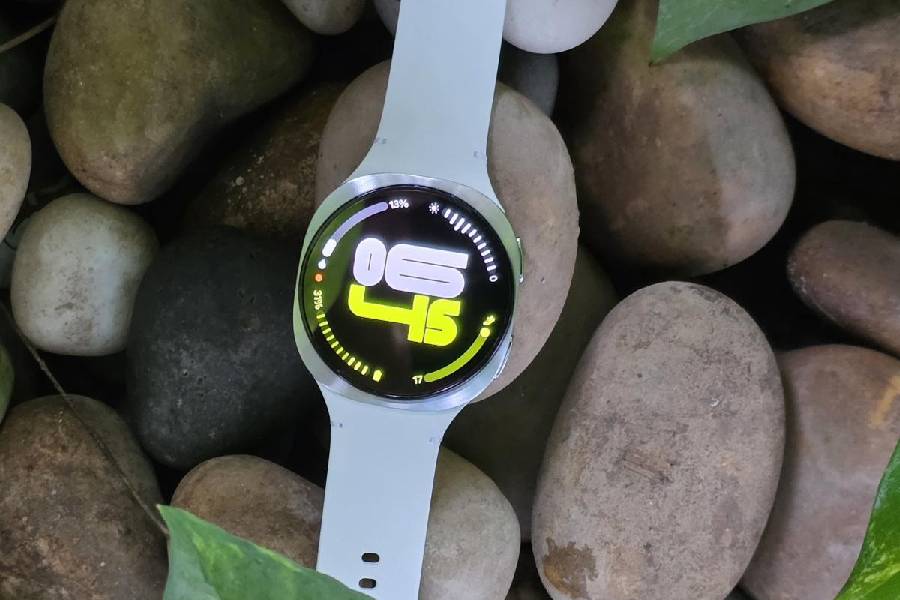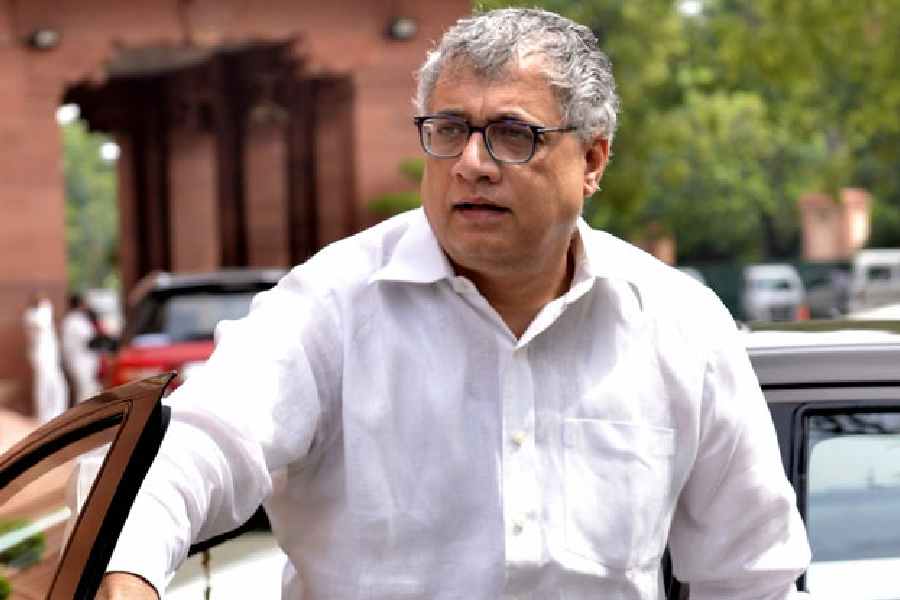Samsung has two new smartwatches — the Galaxy Watch8 and the Galaxy Watch8 Classic, with the latter featuring a physical rotating bezel and the former a digital one.
Galaxy Watch8 has undergone a redesign from the previous generation. The squircle design ensures a consistent lineup of watches. It gives the watch room to become slimmer without compromising on battery size. In the previous generation, there was an aluminum body, and the glass went edge to edge, which meant anytime you bumped into something, there was a chance of getting scratches. The squircle design offers extra material around the display, protecting the screen. Further, it makes the watch look quite different from an Apple Watch.
The digital rotating bezel is present in the Watch8 as opposed to a physical one on Watch8 Classic, more about that in a future article. It works as well as any of the Galaxy Watches from previous generations. There are two buttons on the frame — one of them is a BioSensor for ECG while the other is for controls. There is a microphone and speaker for audio input and output. There is a degree of shine, which makes the watch look premium.
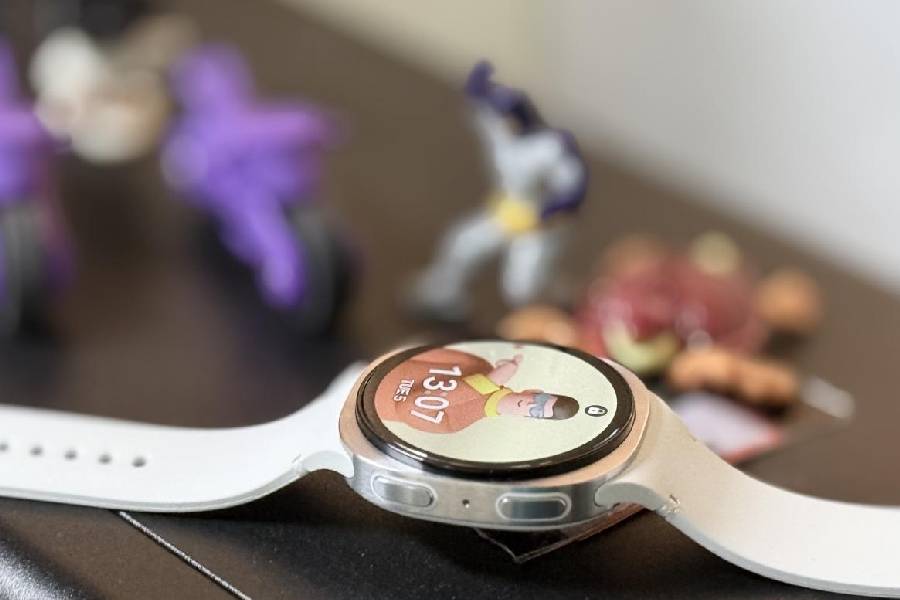
Inside, a 3nm processor ensures longer battery life and improved performance. Interactions feel fluid with the new One UI 8
Health features find direction
A new feature added to the Galaxy Watch lineup is Antioxidant Index, which is something nobody expected to see on a smartwatch. This gives you a measure of the body’s carotenoids. The feature is special to Samsung.
The multicoloured health sensors look for carotenoids, the pigment that gives fruits and veggies their bright red, orange, or yellow colouring. To use the sensor, you have to take the watch off and press your thumb against the sensor at the back for a few seconds. Personally, the score reads “very low,” but we will be trying it for a few weeks to see if the level changes. So, there will be a lot of “Eh, what’s up Doc” moments in the coming days. It will take “up to two weeks” for the antioxidant index to reflect an increased intake of fruits and vegetables, so our full review of the feature will take a few days.
Antioxidant Index can be read in just five seconds via an advanced, light-activated BioActive Sensor. The insights can mirror behavioural changes. For example, drinking carrot juice may result in a measurable change in the index.
According to the World Health Organisation (WHO), eating at least 400 g, or five portions, of fruit and vegetables per day reduces the risk of noncommunicable diseases (NCD) and helps to ensure an adequate daily intake of dietary fibre.
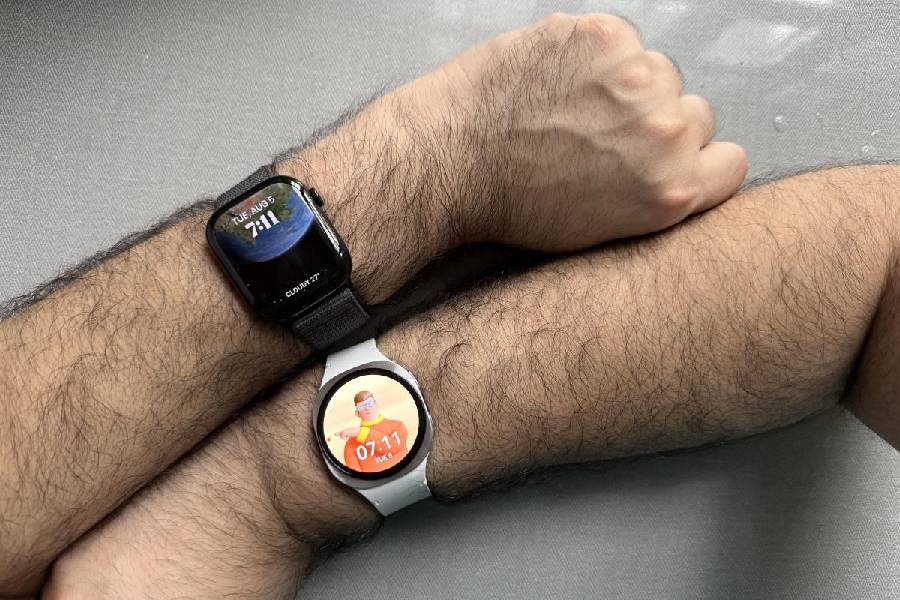
Apple Watch Series 10 (top) versus Samsung Galaxy Watch8
The two other measurements that can make the Galaxy Watch an integral part of the health system are ECG and blood pressure monitoring. ECG monitoring is also there on Apple Watch. It involves sitting as still as possible for 30 seconds with a finger touching one of the buttons on the Watch. The reading roughly matches what you get on the Apple Watch.
To read blood pressure, you first need to take three readings with a traditional pressure monitoring device or sphygmomanometer. Punch in the reading into the watch, which then compares to the first three readings taken using the watch. After this, the device can handle the task independently. Remember, this is a battery-intensive task; try not to use the feature all the time. Also, these are just pointers to where your health is at the moment. In case you are feeling unwell, visit the doctor and don’t rely on any smartwatch in such situations.
It’s interesting to see Samsung experiment in the health space, making us wonder when glucose monitoring would be possible.
Gemini integration
The smartwatch gets interesting with the integration of Gemini. Sure, AI jargon is being thrown around a lot, and most of the features from Google are just marketing techniques. But the integration on the watch is important.
The future of any device will depend on voice integration. Imagine the potential when you unlock a device and then don’t need to load an app, instead use voice to interact, allowing the device to fetch the correct information from whatever the source is. Further, the display on a smartwatch will not get any larger than what you have. So, Gemini will help a great deal.
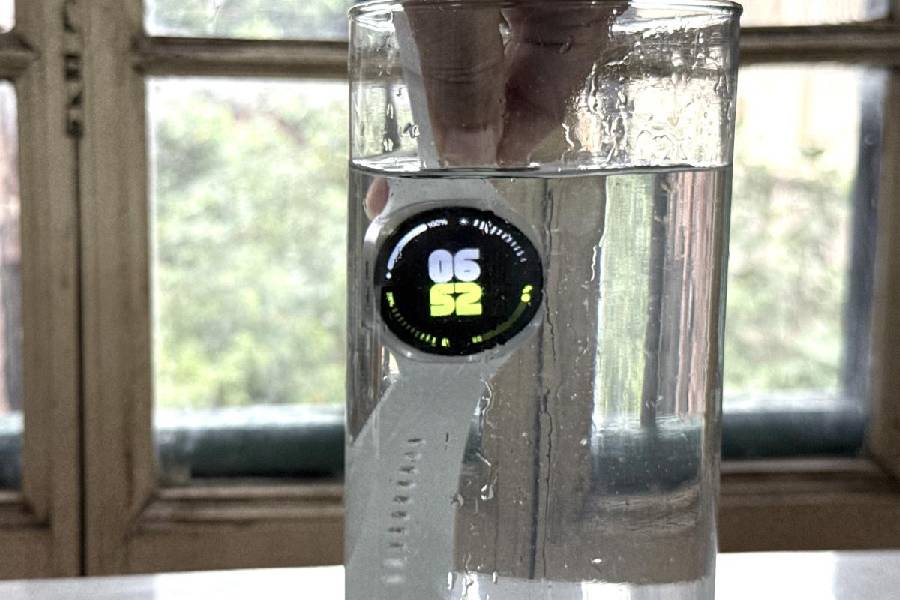
Consistent with IP68 rating, waterresistant in up to five feet of water for up to 30 minutes
You can use voice commands for all the usual Gemini routines, like asking for recipes and measurement conversion while cooking. Now you can use it to start a workout that’s complicated, like a workout that burns off excess calories from a hamburger that I had for lunch. The Watch can start a run workout to burn those calories.
You can also give complicated tasks, like starting a workout to burn 300 calories and loading a playlist for spot jogging. It can bring it all together.
This and that
Vascular Load has been added to the Watch. We have seen a lot of smartwatches moving away from the standard standing hours and steps and focusing more on cardio load, recovery, and sleep. Vascular Load helps track stress levels on your vascular system during sleep. Providing insights on various lifestyle factors, including sleep, stress, and activity, it helps you adopt a more comprehensive approach to managing your health.
Another interesting feature is Running Coach, which calculates your fitness level from one to 10 and develops a tailored training plan complete with real-time guidance and motivational insights. With the updated Together feature, which now supports running, you can gamify your fitness journey by challenging friends and family.
You can do, say, a 10-minute run at your pace and let the watch match the stride length and steps. More importantly, it will measure Vo2 Max. To measure, walk at a steady pace of at least four kilometres per hour for 10 minutes with a good GPS signal. As you exercise, it will give you a plan for the future without causing injuries. It can be a very interesting feature for beginners who don’t know much about running.
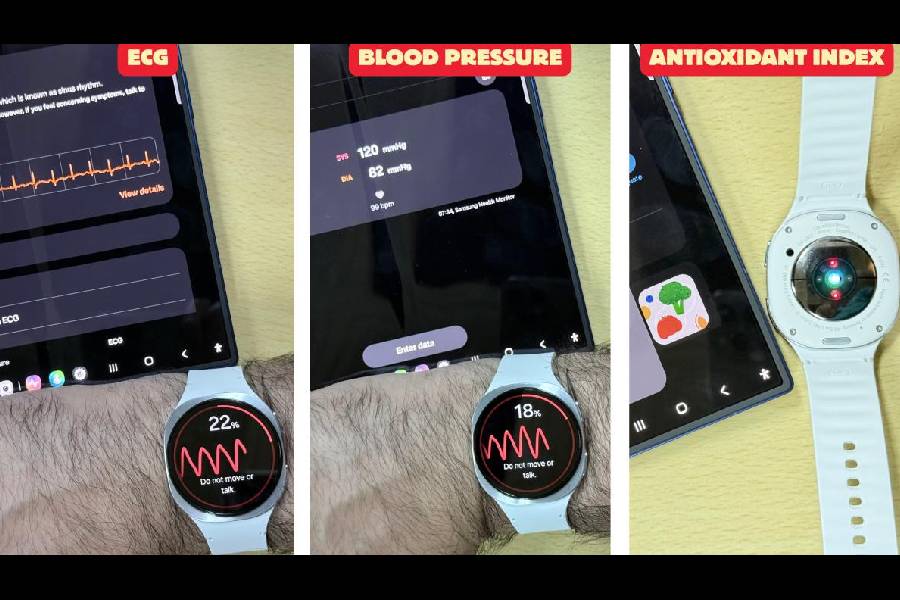
Samsung Galaxy Watch8 can measure ECG, blood pressure (requires some calibration) and antioxidant index
Something equally interesting — bedtime guidance. Record your sleep each night to get recommendations on the best time to go to bed to wake up feeling refreshed. Consistency matters and that’s what the smartwatch is aiming to offer.
Make the call
What were once considered important five-six years ago are now footnotes. The peak brightness on the display is now up to 3,000 nits, helping those who prefer exercising outdoors. Further, it comes in two case sizes — 40mm and 44mm, attracting a wider range of audience. The display is 1.34 inches and 1.47 inches, approximately the same as last year.
So what’s there not to like? There is a new strap design that definitely makes it easy to attach new straps. There are plenty of options available. But it also means older straps — you could be having a few — won’t work with the new watch.
It’s an attractive smartwatch with a number of unique functions that’s trying to take the game away from Garmin. And it’s a worthy rival to the Apple Watch. At the same time, you will get more connected with the Samsung ecosystem, like the way Apple users have become used to products from the Cupertino HQ-ed company.
For tracking health and improving fitness, there needs to be consistency. And there needs to be consistency with the readings that you get on a smartwatch, besides functions that will encourage you to exercise and stay healthy. Samsung Galaxy Watch8 delivers consistency that makes several health and fitness features accessible to a wider range of people.
At a glance
Device: Samsung Galaxy Watch8
Price: Upwards of ₹32999
High notes
- It can measure ECG, blood pressure and antioxidant index
- All-day battery life
- Excellent integration with Samsung Health app
- The squircle design protects the screen if you bump into walls
- Gemini integration will help most users
Muffled note
- Strap mechanism has changed, meaning you cannot use older ones

